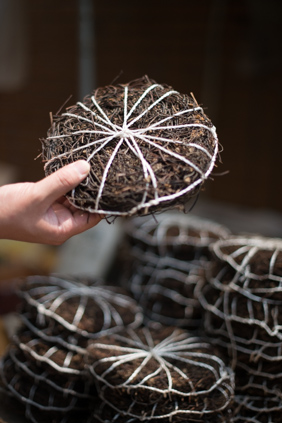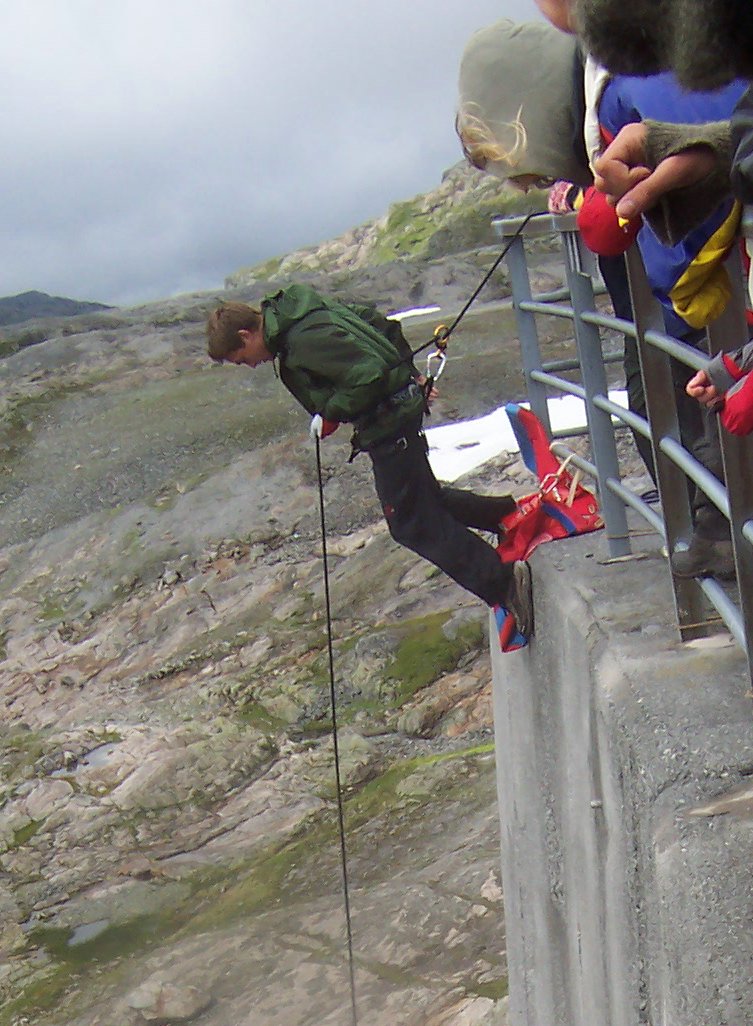|
Rivelin Rocks
Rivelin Rocks are a gritstone edge or escarpment in the upper Rivelin Valley at grid reference , west of Sheffield just off the A57 road in the county of South Yorkshire, England. Overview The rocks reach a height above sea level of approximately and are popular with Climbing, rock climbers and to a lesser extent with walkers, although never overcrowded. The land on which the rocks lie is private and the landowner has protested in the past about damage done to trees and footpaths and has threatened to bar access for visitors. The edge has many trees growing close to it although a good view of parts of the edge can be obtained from the A57 road to the south. Sheep grazing fields stand immediately north of the edge and these are fenced off leaving room for only a narrow path quite close to the edge. The summit of the rocks gives good views of the lower of the Rivelin Dams. Rock climbing The rock-climbing fraternity tend to refer to the rocks as Rivelin Edge. Many rock clim ... [...More Info...] [...Related Items...] OR: [Wikipedia] [Google] [Baidu] |
First Ascent
In mountaineering and climbing, a first ascent (abbreviated to FA in climbing guidebook, guide books), is the first successful documented climb to the top of a mountain or the top of a particular climbing route. Early 20th-century mountaineers and climbers focused on reaching the tops of iconic mountains (e.g. the eight-thousanders) and climbing routes (e.g. the great north faces of the Alps) by whatever means possible, often using considerable amounts of aid climbing, and/or with large expedition style support teams that laid "siege" to the climb. As all the key tops were summited, the manner in which each top was reached became important, particularly the ability to complete the ascent without artificial aid, which is called free climbing. In free climbing, the term first free ascent (abbreviated FFA) is used where a mountain or climbing route is ascended without any artificial aid (devices for climbing protection, protection in the event of a fall could be used as long as the ... [...More Info...] [...Related Items...] OR: [Wikipedia] [Google] [Baidu] |
Geography Of Sheffield
Sheffield is a geographically diverse city in England. It nestles in the eastern foothills of the Pennines and the confluence of five rivers: River Don, South Yorkshire, Don, River Sheaf, Sheaf, River Rivelin, Rivelin, River Loxley, Loxley and Porter Brook, Porter. As such, much of the city is built on hillsides, with views into the city centre or out to the countryside. The city is roughly one third urban, one third rural and one third in the Peak District. At its lowest point the city stands just 29 metres above sea level at Blackburn Meadows on the Rotherham border, rising up to over 500 m in some parts of the city to a peak of 548m at High Stones on the Derbyshire border; however, 89% of the housing in the city is between 100 and 200 metres above sea level. Over 95% of the population resides in the main urban area. Sheffield has more trees per person than any city in Europe, outnumbering people 4 to 1. It has over 170 woodlands covering , 78 public parks covering and 10 pub ... [...More Info...] [...Related Items...] OR: [Wikipedia] [Google] [Baidu] |
Climbing Areas Of England
Climbing is the activity of using one's hands, feet, or other parts of the body to ascend a steep topographical object that can range from the world's tallest mountains (e.g. the eight thousanders) to small boulders. Climbing is done for locomotion, sporting recreation, for competition, and is also done in trades that rely on ascension, such as construction and military operations. Climbing is done indoors and outdoors, on natural surfaces (e.g. rock climbing and ice climbing), and on artificial surfaces (e.g. climbing walls and climbing gyms). The sport of climbing evolved by climbers making first ascents of new types of climbing routes, using new climbing techniques, at ever-increasing grades of difficulty, with ever-improving pieces of climbing equipment. Guides and guidebooks were an important element in developing the popularity of the sport in the natural environment. Early pioneers included Walter Bonatti, Riccardo Cassin, Hermann Buhl, and Gaston Rébuffat, who were ... [...More Info...] [...Related Items...] OR: [Wikipedia] [Google] [Baidu] |
Silver Birch
''Betula pendula'', commonly known as silver birch, warty birch, European white birch, or East Asian white birch, is a species of tree in the family Betulaceae, native to Europe and parts of Asia, though in southern Europe, it is only found at higher altitudes. Its range extends into Siberia, China, and southwest Asia in the mountains of northern Turkey, the Caucasus, and northern Iran. It has been introduced into North America, where it is known as the European white birch or weeping birch and is considered invasive in some states in the United States and parts of Canada. The silver birch is a medium-sized deciduous tree that owes its common name to the white peeling bark on the trunk. The twigs are slender and often pendulous and the leaves are roughly triangular with doubly serrate margins and turn yellow and brown in autumn before they fall. The flowers are catkins and the light, winged seeds get widely scattered by the wind. The silver birch is a hardy tree, a pioneer ... [...More Info...] [...Related Items...] OR: [Wikipedia] [Google] [Baidu] |
Bracken
Bracken (''Pteridium'') is a genus of large, coarse ferns in the family (biology), family Dennstaedtiaceae. Ferns (Pteridophyta) are vascular plants that undergo alternation of generations, having both large plants that produce spores and small plants that produce gamete, sex cells (eggs and sperm) in its life cycle. Brackens are noted for their large, highly divided leaves. They are found on all continents except Antarctica and in all environments except deserts, though their typical habitat is moorland. The genus probably has the widest distribution of any fern in the world. The word ''bracken'' is of Old Norse origin, related to Swedish ''bräken'' and Danish ''bregne'', both meaning fern. In the past, the genus was commonly treated as having only one species, ''Pteridium aquilinum'', but the recent trend is to subdivide it into about ten species. Like other ferns, brackens do not have seeds or fruit, but reproduce by spores. The immature fronds, known as ''fiddleheads'', ar ... [...More Info...] [...Related Items...] OR: [Wikipedia] [Google] [Baidu] |
Arthur Balfour, 1st Baron Riverdale
Arthur Balfour, 1st Baron Riverdale, (9 January 1873 – 7 July 1957), known as Sir Arthur Balfour (1923 -1929) and Sir Arthur Balfour, 1st Baronet (1929 - 1935), was a British steel manufacturer. Balfour was the son of Herbert Balfour. Educated at Aysgarth School and Oundle School, he was Chairman of Arthur Balfour & Co Ltd and of C Meadows & Co Ltd, both of Sheffield, Yorkshire. He also served as President of the Association of British Chambers of Commerce from 1923 to 1924 and of the British Council from 1947 to 1950 and as Chairman of the Advisory Council for Scientific and Industrial Research from 1937 to 1957. He chaired the Committee on Industry and Trade from 1924 to 1928. In 1935 he was appointed as the chairman of the Departmental Committee on Fire Brigade Services, which became known as the Riverdale Committee. The committee's report resulted in the Fire Brigades Act 1938 ( 1 & 2 Geo. 6. c. 72). Balfour married Frances Josephine Bingham, daughter of Charles Hen ... [...More Info...] [...Related Items...] OR: [Wikipedia] [Google] [Baidu] |
Abseiling
Abseiling ( ; ), also known as rappelling ( ; ), is the controlled descent of a steep slope, such as a rock face, by moving down a rope. When abseiling, the person descending controls their own movement down a static or fixed rope, in contrast to Belaying, lowering off, in which the rope attached to the person descending is paid out by their belayer. Description The technique is used by Climbing, climbers, mountaineers, Caving, cavers, Canyoning, canyoners, search and rescue and rope access technicians to descend cliffs or slopes when they are too steep or dangerous to descend without protection. Many climbers use this technique to protect established Anchor (climbing), anchors from damage. Rope access technicians also use this as a method to access difficult-to-reach areas from above for various industrial applications like maintenance, construction, inspection and welding. To descend safely, abseilers use a variety of techniques to increase the friction on the rope to t ... [...More Info...] [...Related Items...] OR: [Wikipedia] [Google] [Baidu] |
Joe Brown (climber)
Joseph Brown (26 September 1930 – 15 April 2020) was an English mountaineer who was regarded as an outstanding pioneer of rock climbing during the 1950s and early 1960s. Together with his early climbing partner, Don Whillans, he was one of a new breed of British post-war climbers who came from working class backgrounds in contrast to the upper and middle class professionals who had dominated the sport up to the Second World War. He became the first person to climb the third-highest mountain in the world when he was on the 1955 British Kangchenjunga expedition. Some of his climbs were televised and he assisted with mountaineering scenes in several films; Brown died on 15 April 2020 at the age of 89. Early life Brown was born the seventh and last child of a family in Ardwick, Manchester, England. His father was a builder and merchant seaman who died in 1931 when Brown was eight months old. Brown's mother was forced to take in washing before she began work as a cleaner. I ... [...More Info...] [...Related Items...] OR: [Wikipedia] [Google] [Baidu] |
Peak District
The Peak District is an Highland, upland area in central-northern England, at the southern end of the Pennines. Mostly in Derbyshire, it extends into Cheshire, Greater Manchester, Staffordshire, West Yorkshire and South Yorkshire. It is subdivided into the Dark Peak, moorland dominated by gritstone, and the White Peak, a limestone area with valleys and gorges. The Dark Peak forms an arc on the north, east and west of the district, and the White Peak covers central and southern areas. The highest point is Kinder Scout (). Most of the area is within the Peak District National Park, a protected landscape designated in 1951. A 2021 report states that "the Park's own population numbers around 40,000 and supports an estimated 18,000 jobs, predominantly through farming, manufacturing and, inevitably, tourism". The area has been inhabited since the Mesolithic era; it was largely used for agricultural purposes until mining arose in the Middle Ages. During the Industrial Revolution, seve ... [...More Info...] [...Related Items...] OR: [Wikipedia] [Google] [Baidu] |
Rivelin Dams
Rivelin Dams are a pair of water storage reservoirs situated in the upper part of the Rivelin Valley, west of Sheffield in South Yorkshire, England. The dams are owned by Yorkshire Water and provide water to 319,000 peopleTrenchless International.com. 319,000 people supplied by Rivelin system. as well as compensation water for the River Rivelin. They are named Upper and Lower and fall just within the eastern boundary of the Peak District. Description The Lower reservoir is the larger of the two and has easier public access with a tarmac road giving vehicular access to a small car park at the southern end of the dam wall. Access to the Upper reservoir and the woodland around it is by permit, there is a track with a locked gate which gives acc ...[...More Info...] [...Related Items...] OR: [Wikipedia] [Google] [Baidu] |







